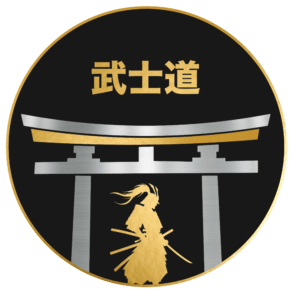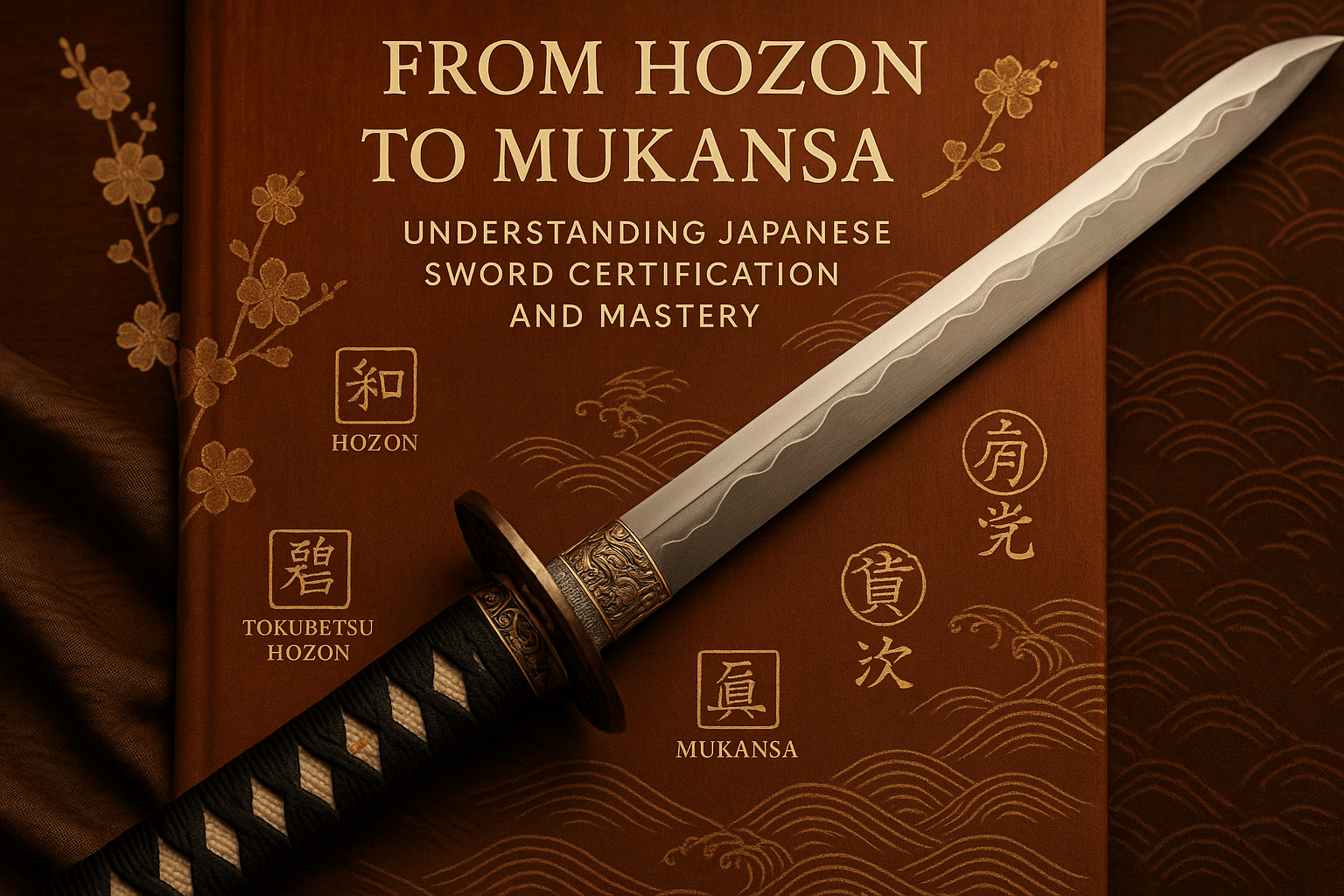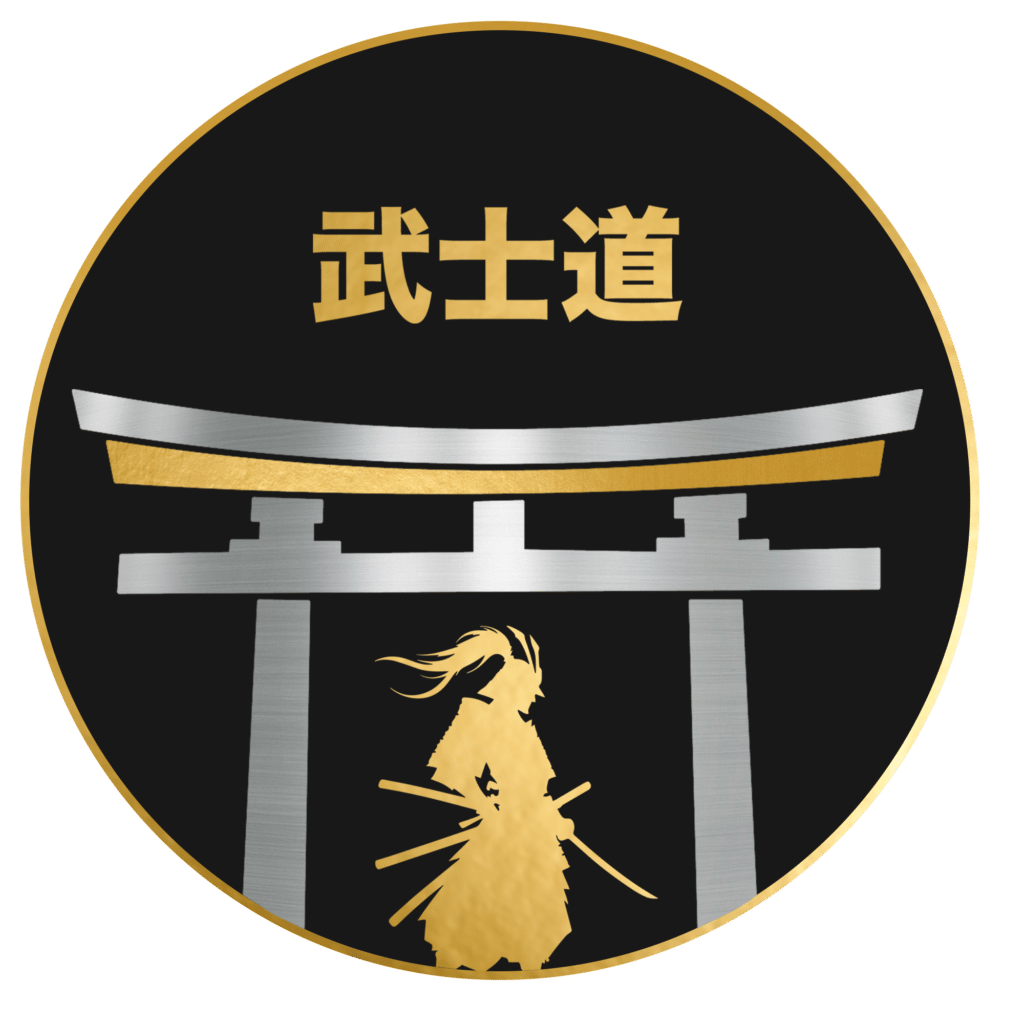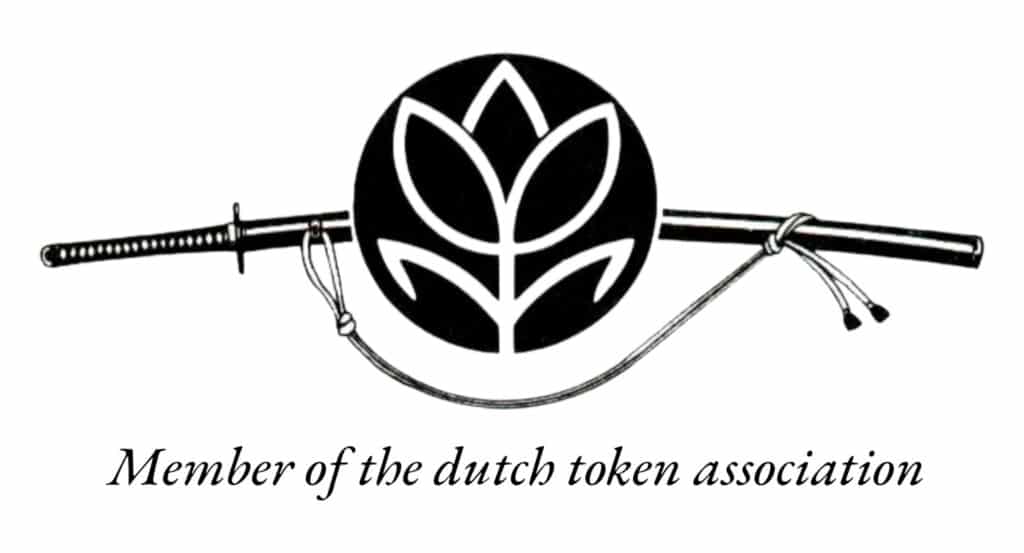The Path of the Sword: A Tradition of Mastery
In Japan, the forging of a sword is not merely the creation of a weapon—it is the embodiment of spirit, tradition, and aesthetic excellence. Rooted in centuries of cultural reverence, Japanese swordsmithing has evolved into a sacred art form, celebrated for its rigorous discipline and unmatched craftsmanship. Each blade reflects a lineage of mastery, with techniques meticulously preserved and passed down through generations like treasured heirlooms.
From the early days of the samurai to the quiet forges of today’s master smiths, the path of the sword is marked by a profound commitment to perfection. More than just steel and fire, it is a journey defined by patience, precision, and philosophical devotion. Recognition within this world is hard-earned, with certification systems like Hozon, Tokubetsu Hozon, Juyo, and Mukansa serving as milestones on the path to excellence.
This guide explores the intricate hierarchy of sword certifications and honors the legacy of master smiths who have shaped and preserved this ancient tradition, offering a window into one of Japan’s most revered cultural treasures.
Understanding the NBTHK and Certifications
The Nihon Bijutsu Token Hozon Kyokai (NBTHK), or the Society for the Preservation of Japanese Art Swords, is the cornerstone of authenticity, quality, and legacy in Japanese swordmaking. Founded in 1948 in response to post-World War II restrictions that nearly extinguished traditional swordsmithing, the NBTHK stands today as the foremost authority for sword appraisal and certification in Japan.
The NBTHK’s certification process is renowned for its meticulous nature, overseen by expert judges skilled in metallurgy, history, and the artistry of swordsmithing. Swords submitted for evaluation face thorough scrutiny based on forging technique, aesthetic allure, historical value, and preservation. The society issues a hierarchy of certifications—Hozon (Worthy of Preservation), Tokubetsu Hozon (Especially Worthy of Preservation), Juyo Token (Important Work), and Tokubetsu Juyo Token (Especially Important Work)—each marking ascending degrees of historical and artistic significance.
These certifications provide collectors and historians with a trusted framework for valuing swords, but more importantly, they serve to safeguard craftsmanship honed over generations. Recognizing a sword with NBTHK certification ensures that the tradition, style, and expertise of its creator continue to be celebrated and preserved as part of Japan’s living heritage.
Hozon: The Foundation of Preservation
The Hozon certificate, granted by the NBTHK, represents the essential first step in the recognition and appraisal of Japanese swords. Literally meaning “Preservation,” a Hozon designation affirms that a sword possesses authentic characteristics of historical, artistic, or cultural importance. It’s more than a label; it’s a formal affirmation that the blade deserves preservation as part of Japan’s treasured cultural legacy.
To merit Hozon certification, a sword must undergo rigorous scrutiny by NBTHK experts. They assess attributes such as craftsmanship, historical attribution to a school or smith, and overall condition. This recognition weeds out reproductions and ensures only authentic, worthy pieces are preserved. While the Hozon certificate does not denote the pinnacle of rarity or excellence, it guarantees a blade meets foundational standards for authenticity and value.
For collectors embarking on their journey, a Hozon-certified sword is a reliable cornerstone, opening the door to the nuanced world of nihonto and laying the foundation for higher distinctions like Tokubetsu Hozon and beyond.
Tokubetsu Hozon: Beyond Appreciation
Ascending from the foundational Hozon level is the Tokubetsu Hozon (Special Preservation) certification, a mark signifying exceptional historical, aesthetic, or technical merit. While Hozon status means a sword is worthy of preservation, Tokubetsu Hozon is reserved for those that stand out as exemplary reflections of Japanese cultural and artistic achievement.
Only swords with Hozon certification are considered eligible for Tokubetsu Hozon. The NBTHK’s evaluation dives deeper, considering craftsmanship, state of preservation, artistic beauty, and proven historical provenance. A sword may stand out for features such as vivid hamon (temper lines), refined jihada (grain patterns), elegant curvature, or a distinguished signature. The historical context, like a connection to a renowned smith, school, or significant era, can also elevate its status.
Advanced collectors prize Tokubetsu Hozon-certified swords for their heightened rarity and distinction. The designation confirms that the blade is not only authentic but also a valuable cultural artifact of the highest caliber, elevating its standing and its role in preserving Japan’s swordmaking heritage.
Juyo Token: Recognizing True Importance
Among Japanese swords, few honors are as prestigious as the Juyo Token (重要刀剣), or “Important Sword.” Awarded by the NBTHK, this distinction recognizes both breathtaking craftsmanship and profound historical and cultural significance. Achieving Juyo status is a testament to a blade’s exceptional artistry, state of preservation, notable provenance, and aesthetic refinement.
The road to Juyo is exceptionally challenging. Only swords that have already attained Tokubetsu Hozon certification are even considered. From there, a panel of Japan’s foremost experts scrutinizes every detail—authenticity of the smith’s signature (mei), forging technique, hamon activity, and the harmony of the blade’s overall appearance. Only those weapons that epitomize the highest ideals of traditional smithing and bear significant lineage are honored with Juyo status.
Often attributed to legendary smiths or defining periods, Juyo Token swords transcend the technical—they are tangible embodiments of heritage and artistry. For collectors, curators, and historians alike, a Juyo Token is much more than an accolade; it is a declaration that the blade is a treasure of national cultural value, deserving preservation for generations to come.
Tokubetsu Juyo: Near the Pinnacle
At the summit of Japanese sword certification lies Tokubetsu Juyo, or “Especially Important,” a title reserved for masterpieces that set an almost unattainable standard of excellence. Bestowed by the NBTHK, Tokubetsu Juyo is granted to swords—and sometimes fittings—that surpass even the rigorous requirements of Juyo, marking them as cultural monuments of unparalleled historical, artistic, and technical value.
Only a select few—fewer than one hundred swords—have ever achieved this accolade, illustrating its exclusivity and reverence. Each candidate undergoes exhaustive evaluation by panels of scholars, appraisers, and leading kantei (sword experts), who assess the sword’s provenance, craftsmanship, state of preservation, and artistic merit. Many Tokubetsu Juyo swords are credited to monumental figures in sword history, such as Masamune or Yoshimitsu, whose works have shaped the very conception of Japanese bladesmithing.
For collectors, acquiring a Tokubetsu Juyo sword represents the ultimate achievement—a tangible connection to the apex of tradition and artistry. For the broader community, these works are benchmarks, setting the standards against which all other swords are measured and providing living testimony to the enduring legacy of the Japanese sword.
Mukansa: Craft Beyond Review
Beyond the hierarchy of blade certifications lies the rare and revered title of Mukansa, or “beyond judgment.” This honor signifies not just superior skill but a lifetime of consistent excellence and contribution to the art. For a smith, to be named Mukansa by the NBTHK is to be acknowledged as a living treasure, no longer requiring evaluation in competition or exhibition—their craftsmanship is beyond compare.
The journey to Mukansa is arduous, usually taking decades of unwavering dedication and success in elite competitions such as the Shinsaku Meitō Ten (Modern Sword Masterpieces Exhibition). Only after accumulating a series of top honors does a smith step beyond the realm of contest and critique.
Mukansa swordsmiths are pillars of tradition and innovation. Their blades are coveted for unrivaled beauty and flawless function, but even more so for the cultural excellence they embody. Mukansa is not the end of a journey, but a transformation—from competitor to exemplar, artisan to master—preserving and shaping a tradition that stretches across generations.
Conclusion: The Edge of Discipline
The ascent from Hozon to Mukansa is more than a passage through a scale of accolades; it is a journey deeply rooted in discipline, humility, and the pursuit of timeless excellence. Each level testifies to the smith’s devotion—not merely to their craft, but to the preservation of Japan’s cultural soul.
True mastery, as embodied by those who reach Mukansa or create Tokubetsu Juyo masterpieces, transcends technical skill alone. It reflects a reverence for lineage, an understanding of heritage, and a relentless quest for beauty and function. As collectors, historians, or admirers, delving into this system of recognition connects us to the stories and sacrifices that shape each blade, and to the living tradition that continues to evolve.
In the world of Japanese swordcraft, ultimate discipline forms the sharpest edge—not only of steel, but of the spirit that forges it. The journey of the swordsmith is never-ending, just as the culture it upholds is ever-living.





